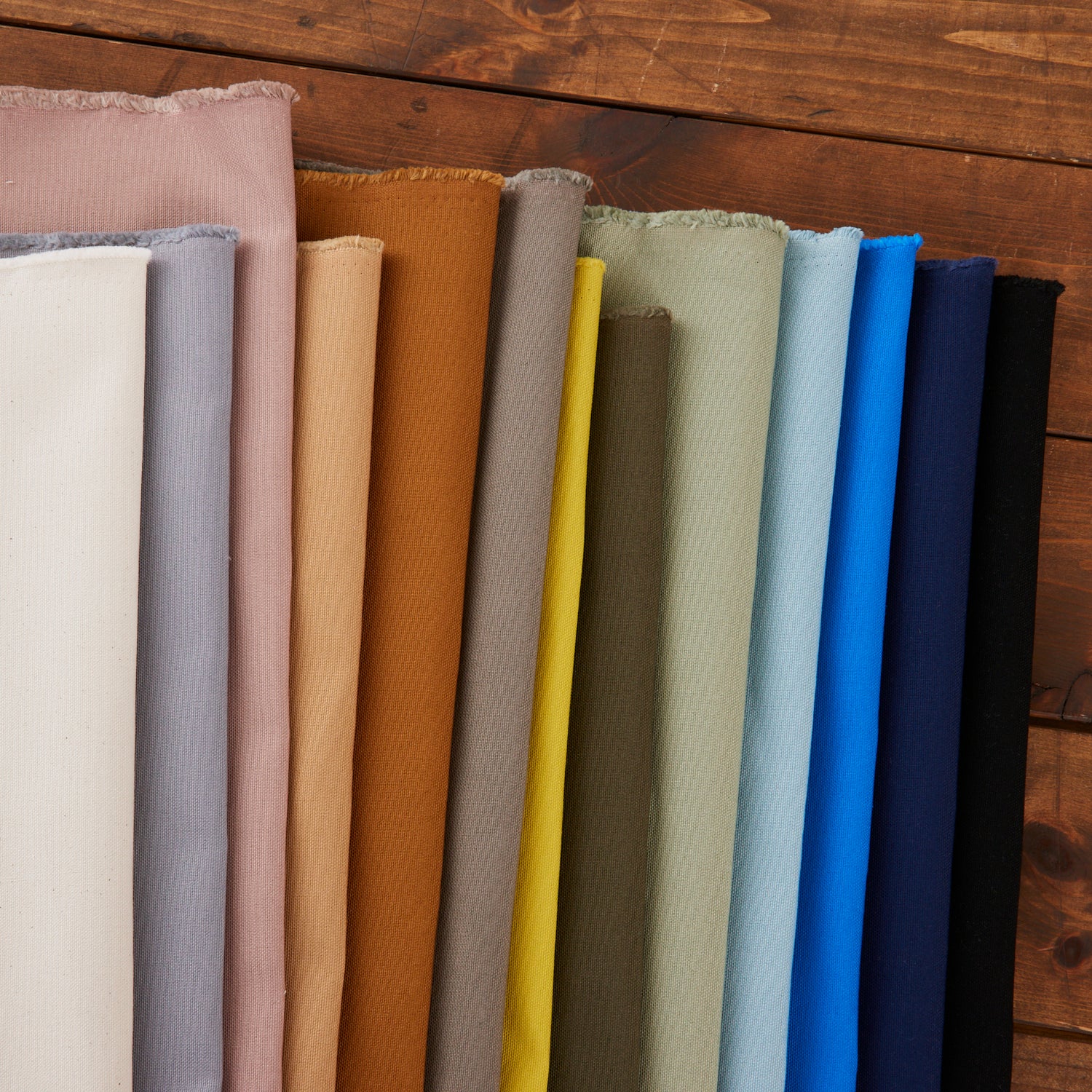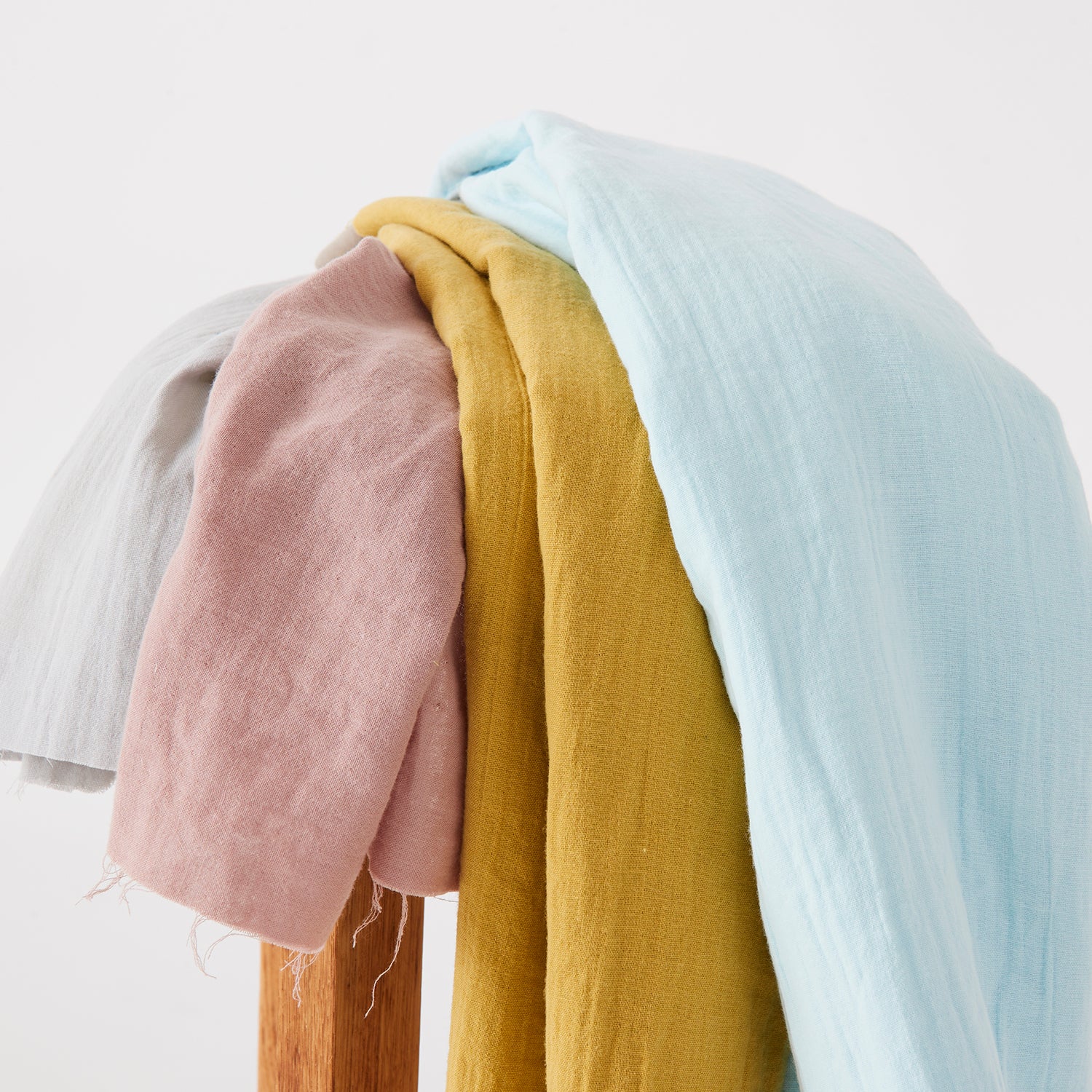
In a world marked by the relentless churn of fashion trends, where clothing items quickly transition from the catwalk to our closets, the term fast fashion has become ubiquitous. This breakneck pace of production, however, is not without environmental consequence. The fashion industry is known to be one of the planet's largest polluters, accounting for significant waste and carbon emissions.
In response to these issues, the concept of sustainability has been a hot talking point for fashion brands in recent years. One key facet of sustainable fashion practices is the utilization of deadstock fabric. In this article, we will delve into the world of deadstock fabric, exploring its role in promoting sustainability, and its potential to counter the adverse effects of fast fashion.
What is deadstock fabric?
Deadstock fabric refers to unused, surplus textile materials that have been left over from previous textile production runs or discontinued stock from fabric manufacturers or fashion brands. These fabrics often languish in warehouses, collecting dust, and are at risk of being discarded as waste. However, the beauty of deadstock lies in its inherent potential for positive transformation.
This type of textile is often of high quality, retaining the same characteristics and durability as fabrics used in full-scale production. From soft yet durable cottons, breezy linens to durable denims, the variety of deadstock fabric available is as diverse as the fashion industry itself.
Why is deadstock fabric so good?
Deadstock fabric has rapidly become a celebrated champion in the world of sustainable fashion. But what makes it stand out and why is it considered such a valuable resource for eco-conscious consumers and designers? Let's explore the many reasons why deadstock fabric is often deemed "so good."
-
Sustainability at Its Core: At the heart of deadstock fabric's appeal is its inherent sustainability. These materials have already been produced, sparing the energy, water, and resources required to create new fabrics. By opting for deadstock, you're essentially recycling and reducing the fashion industry's environmental footprint.
-
Unique and Limited: One of the most exciting aspects of working with deadstock fabric is its uniqueness. These textiles are often remnants of past collections or discontinued lines, which means they offer a limited supply. If you're looking for one-of-a-kind pieces and a chance to stand out from the crowd, deadstock fabric provides the opportunity to create fashion items that are truly exclusive.
-
Quality and Durability: Deadstock fabrics are typically of high quality. They haven't endured the wear and tear of everyday use, making them just as durable and dependable as newly produced textiles. This means that the garments you create from deadstock materials are built to last, reducing the need for frequent replacements and contributing to a more sustainable wardrobe.
- Cost-Effective: Beyond the environmental benefits, deadstock fabric is often more budget-friendly than freshly manufactured textiles. This affordability allows both designers and consumers to make sustainable fashion choices without breaking the bank.
Is buying deadstock fabric sustainable?
In an era where sustainability is a buzzword across industries, fashion enthusiasts and environmentally-conscious consumers are increasingly turning to deadstock fabric as a means of aligning their passion for style with their commitment to eco-friendliness. But is buying deadstock fabric truly a sustainable choice?
One of the primary reasons deadstock fabric is hailed as a sustainable option is its significant environmental benefits. When you purchase deadstock, you're essentially intercepting textiles that would otherwise have met an ignominious end in landfills. By repurposing and reusing these materials, you help divert waste from the environment. This reduction in textile waste has a profound impact on minimizing pollution and conserving valuable resources.
Furthermore, the production of new textiles demands substantial amounts of water, energy, and raw materials. By opting for deadstock, you contribute to resource conservation, reducing the carbon footprint associated with the manufacturing process.
Where can I buy deadstock fabric?
Many online fabric stores specialize in offering a diverse range of deadstock textiles. These platforms often curate deadstock collections from various sources and provide detailed information about the fabric's composition, weight, and width. Online retailers have made it easier than ever to browse, select, and purchase deadstock fabric from the comfort of your own home.
Fabric wholesalers (like our wholesale arm, KOKKA USA) often have deadstock materials available for purchase. Many fabric wholesalers, including KOKKA USA, have a vast online catalogue for you to puruse. Wholesalers are a great option for those looking to buy deadstock fabric in bulk for larger projects or business purposes. Please note that many wholesalers will require business licences in order to sell to you at wholesale prices.
While the primary focus of local fabric stores may be selling new materials, many do carry deadstock fabrics in small quantities. Visiting your neighborhood fabric shop and inquiring about deadstock options can yield surprising discoveries and a chance to support local businesses.
Vintage and thrift stores are treasure troves for finding unique deadstock fabrics. These materials might be in the form of vintage clothing or fabric remnants from previous decades. Keep an eye out for vintage shops, thrift stores, and flea markets in your area for some one-of-a-kind finds.
Online fabric stores, (like our shop Kokka Fabrics!) and marketplaces like Etsy often feature small, independent sellers offering deadstock fabric. These sellers can be a great resource for unique and hard-to-find deadstock materials.
Some communities organize fabric swaps or exchanges, where sewing enthusiasts come together to trade materials. This is an eco-friendly way to obtain deadstock fabric while connecting with like-minded individuals.
Consider repurposing old clothing and textile items you already own. This approach is the epitome of sustainable fashion, as you're essentially transforming existing deadstock fabric into something new and stylish.
In your search for deadstock fabric, it's essential to be patient and persistent. The availability of these materials can vary, and new stock might arrive sporadically. By exploring these different channels, you'll enhance your chances of finding the perfect deadstock fabric for your creative projects.
Find Japanese Deadstock Fabric with Kokka Fabrics
As the official North American online store for the Japanese fabric manufacturer “KOKKA”, we at Kokka Fabrics are happy to share that you can purchase our deadstock fabrics through our site! As time goes on, we plan to increase the amount of deadstock fabrics we carry and share with our community. Make sure to check out the collection below or contact us if you have any questions about our fabrics, deadstock or otherwise. Happy sewing!

































